
| Version | Summary | Created by | Modification | Content Size | Created at | Operation |
|---|---|---|---|---|---|---|
| 1 | Beatrix Zheng | -- | 2892 | 2022-10-27 01:47:49 |
Video Upload Options
A luxury vehicle provides increased levels of comfort, equipment, amenities, quality, performance, and status relative to regular cars for an increased price. The term is subjective and reflects both the qualities of the car and the brand image of its manufacturer. Luxury brands rank above premium brands, though there is no fixed demarcation between the two. Traditionally, most luxury cars were large vehicles, though smaller sports-oriented models were always produced. “Compact“ luxury vehicles such as hatchbacks, and off-road capable sport utility vehicles, are relatively modern trends.
1. Brands
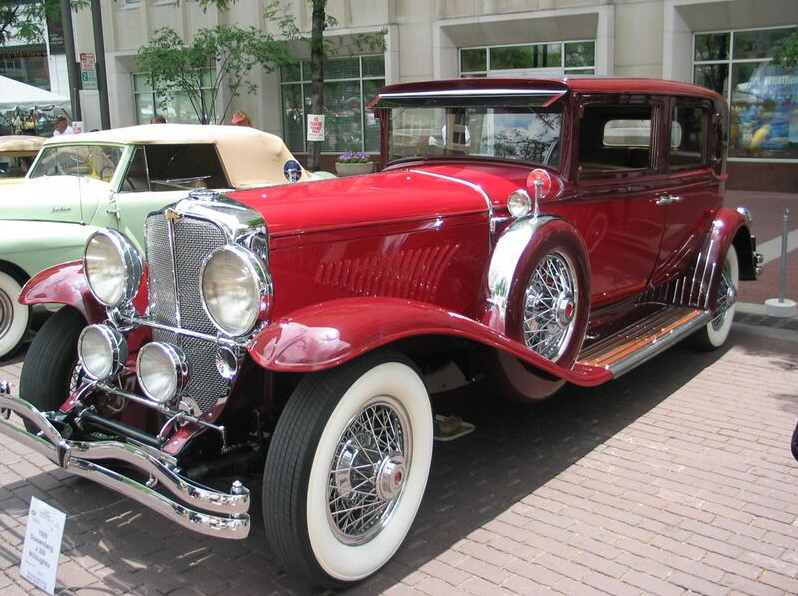
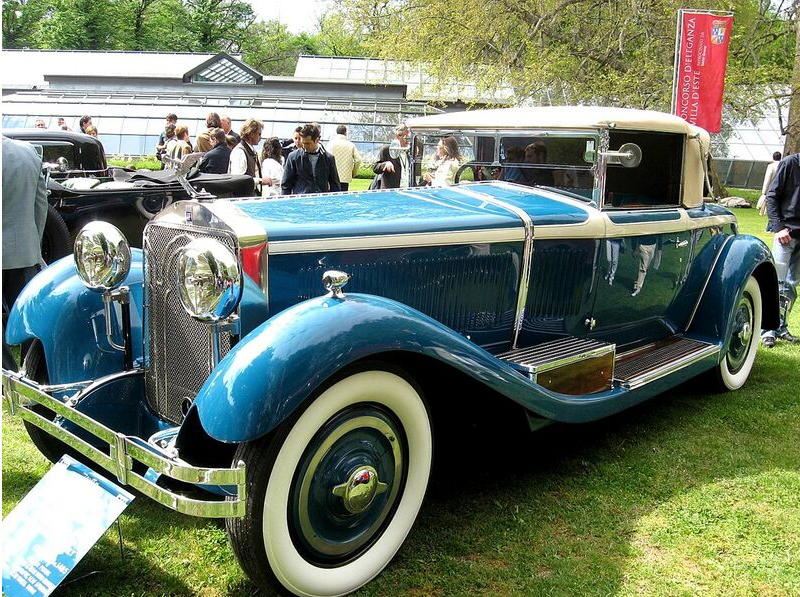
Some auto manufacturers market their luxury models using the same marque as the rest of their line. Others have created a separate marque (e.g. Lexus, launched by Toyota in 1989)[3] or purchased one (e.g. Bentley, by Volkswagen in 1998).[4][5] Occasionally, a luxury car is initially sold under a mainstream marque and is later rebranded under a specific luxury marque (for example the Hyundai Genesis G80).[6][7] For mass-produced luxury cars, sharing of platforms or components with other models is common,[8] as per modern automotive industry practice.
| Carmaker | Sample luxury vehicle brands |
|---|---|
| Tesla | Tesla |
| Toyota | Lexus |
| Nissan | Infiniti |
| Honda | Acura |
| Hyundai | Genesis Motor |
| Volkswagen | Audi AG; Bentley, Bugatti |
| Groupe PSA | DS Automobiles |
| BMW Group | BMW; Rolls-Royce |
| Porsche AG | Porsche |
| Tata Motors | Jaguar Cars, Land Rover |
| Ferrari N.V. | Ferrari |
| FAW Group | Hongqi |
| GM | Buick ; Cadillac |
| Ford | Lincoln Motor Company |
| Daimler AG | Mercedes-Benz |
| Geely | Volvo Cars |
2. Classification Standards
Several car classification schemes which include a luxury category, such as:
- Australia: Since the year 2000, the Federal Government's luxury car tax applies to new vehicles over a certain purchase price, with higher thresholds applying for cars considered as fuel efficient.[9][10] As of 2019, the thresholds were approximately AU$66,000 (US$51,000) for normal cars and AU$76,000 (US$58,000) for fuel efficient cars.[11]
- Europe: Luxury cars are classified as F-segment vehicles in the European Commission classification scheme.[12][13][14]
- Italy: The term "auto di lusso" is used for luxury cars.
- France: The term "voiture de luxe" is used for luxury cars.[15]
- Germany: The term German: Oberklasse (upper class) is used for luxury cars.[16]
- Russia: The term (автомобиль представительского класса ("representative class vehicle, also translated as luxury vehicle) is used for luxury cars.[17]
- Rental cars: The ACRISS Car Classification Code is a system used by many car rental companies to define equivalent vehicles across brands. This system includes "Luxury" and "Luxury Elite" categories (along with "Premium" and "Premium Elite" categories).[18] The criteria for a vehicle to be considered "luxury" is not published.
3. Market Categories
3.1. Premium Compact / Entry-Level Luxury
The premium compact class is the category of the smallest luxury cars. It became popular in the mid-2000s, when European manufacturers— such as Audi, BMW, and Mercedes-Benz— introduced new entry-level models that were smaller and cheaper than their compact executive models.[19]
Examples include the Acura ILX, Mini Clubman, Alfa Romeo Giulietta, Audi A3, Mercedes GLA, Mini Countryman, Audi Q3, BMW X2, Buick Verano, BMW 1 Series, BMW 2 Series, Lexus CT 200h,[3] Infiniti Q30, Mercedes-Benz A-Class,[20][21] Mercedes-Benz B-Class, Volvo C30,[22] Volvo V40,[23][24] and BMW i3.[25] Premium compacts compete with well-equipped mid-size cars, and highly optioned premium compact cars can have pricing and features that overlaps with compact executive cars.[26]
-
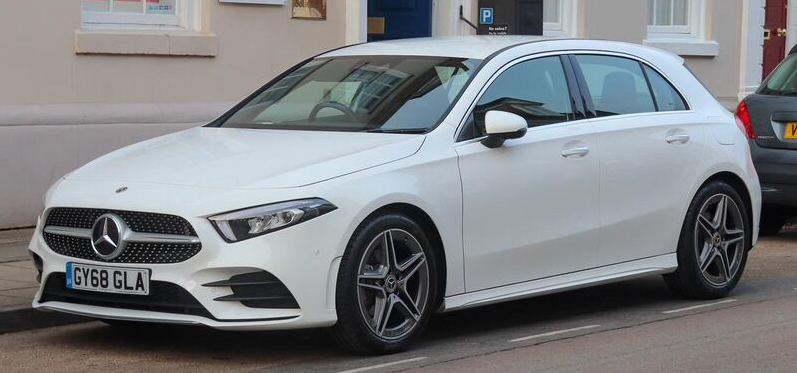
Mercedes-Benz A-Class. (2018–present). https://handwiki.org/wiki/index.php?curid=1986797
-
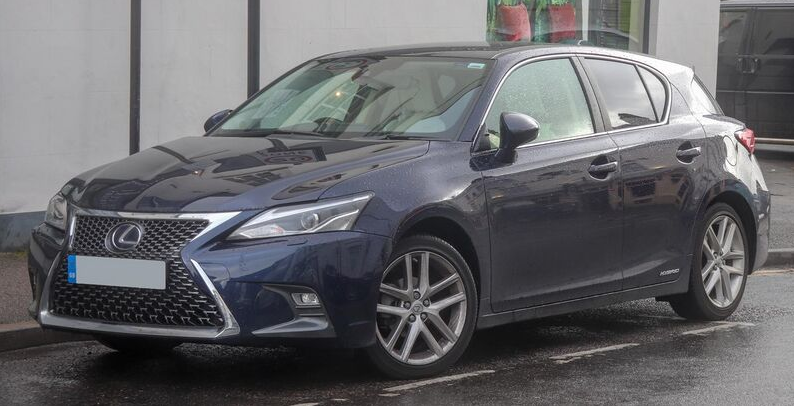
Lexus CT 200h (2011–present). https://handwiki.org/wiki/index.php?curid=1130733
-
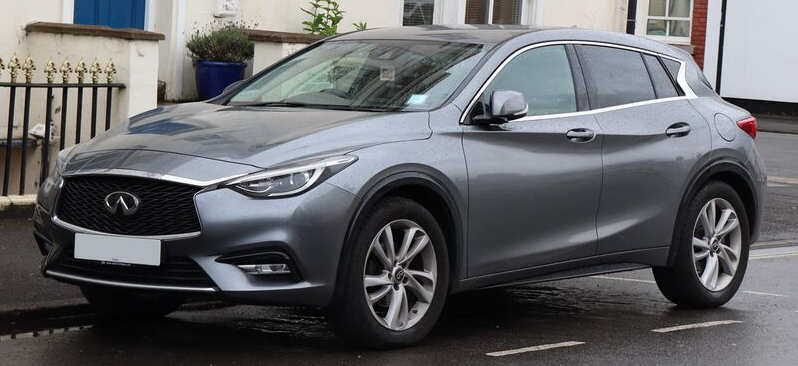
Infiniti Q30 (2015–2019). https://handwiki.org/wiki/index.php?curid=1755413
3.2. Compact Executive / Compact Luxury
A compact executive car is a premium car smaller than an executive car. In European classification, compact executive cars are part of the D-segment. In North American terms, close equivalents are "compact premium car", "compact luxury car",[27] "entry-level luxury car" and "near-luxury car".[28]
-
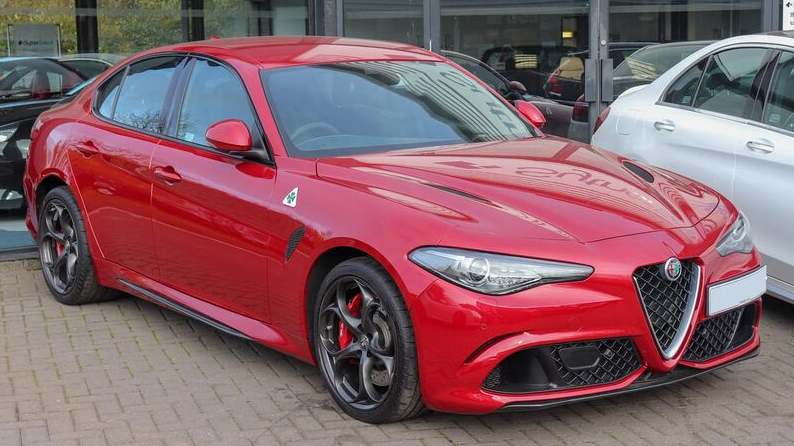
Alfa Romeo Giulia. (2015–present). https://handwiki.org/wiki/index.php?curid=1190738
-
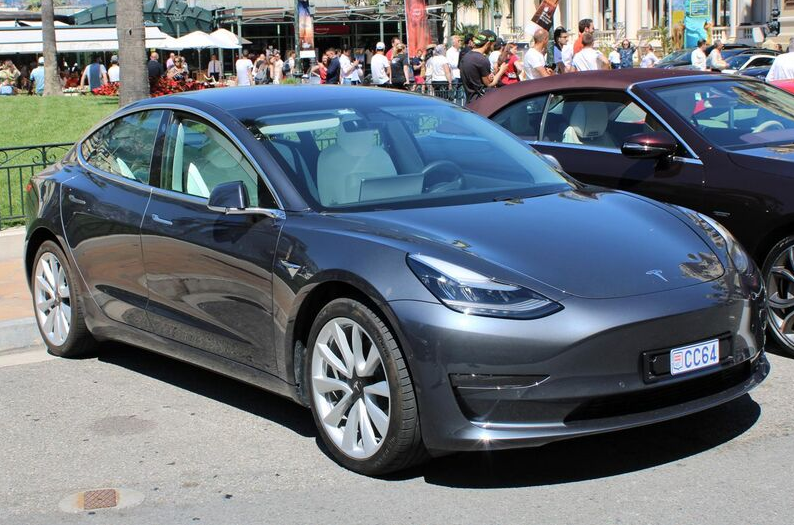
Tesla Model 3 (2018–present). https://handwiki.org/wiki/index.php?curid=1263743
-
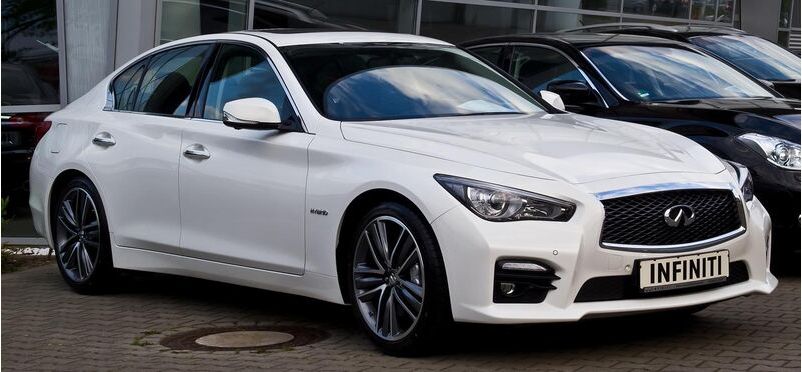
Infiniti Q50 (2013–present). https://handwiki.org/wiki/index.php?curid=1549404
3.3. Executive / Mid-Size Luxury
Executive car is a British term for an automobile larger than a large family car. In official use, the term is adopted by Euro NCAP, a European organization founded to test for car safety. It is a passenger car classification defined by the European Commission.
-
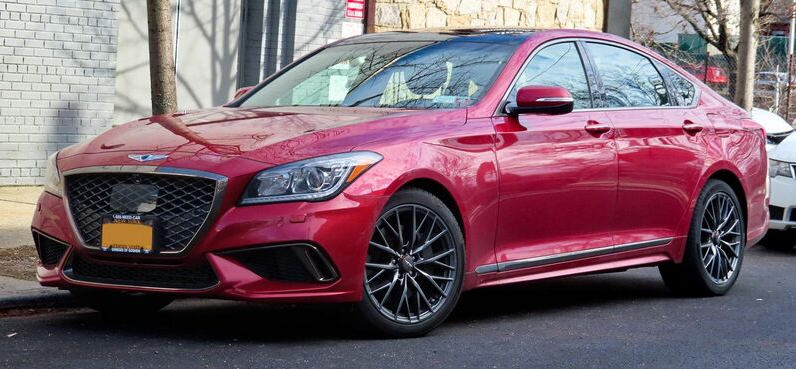
Genesis G80 (2016–present). https://handwiki.org/wiki/index.php?curid=1125700
-
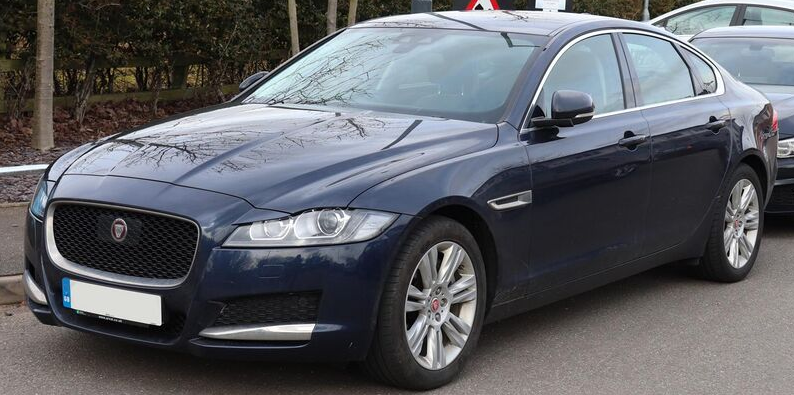
Jaguar XF (2015–present). https://handwiki.org/wiki/index.php?curid=1131213
-
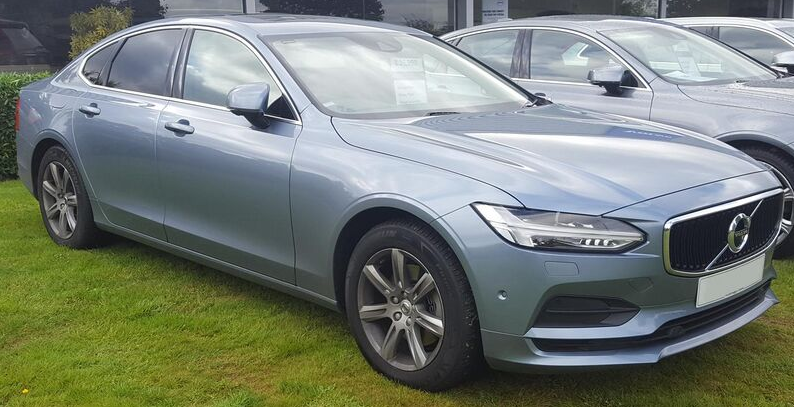
Volvo S90 (2016–present). https://handwiki.org/wiki/index.php?curid=1528536
3.4. Luxury Saloon / Full-Size Luxury Sedan
The next category of luxury cars is known in Great Britain as a luxury saloon or luxury limousine,[29][30][31][32] and is known in the United States as a full-size luxury sedan, large luxury sedan or flagship sedan.[33][34][35][36] It is the equivalent of the European F-segment and German Oberklasse segment.
Many of these luxury saloons are the flagship for the marque and therefore include the newest automotive technology.[37] Several models are available in long-wheelbase versions, which provide additional rear legroom and often a higher level of standard features.[38]
Examples of luxury saloons / full-size luxury sedans include the BMW 7 Series,[39] Cadillac CT6[40][41] Genesis G90,[40] Mercedes-Benz S-Class,[39] Lexus LS,[40] and Porsche Panamera.[39]
-
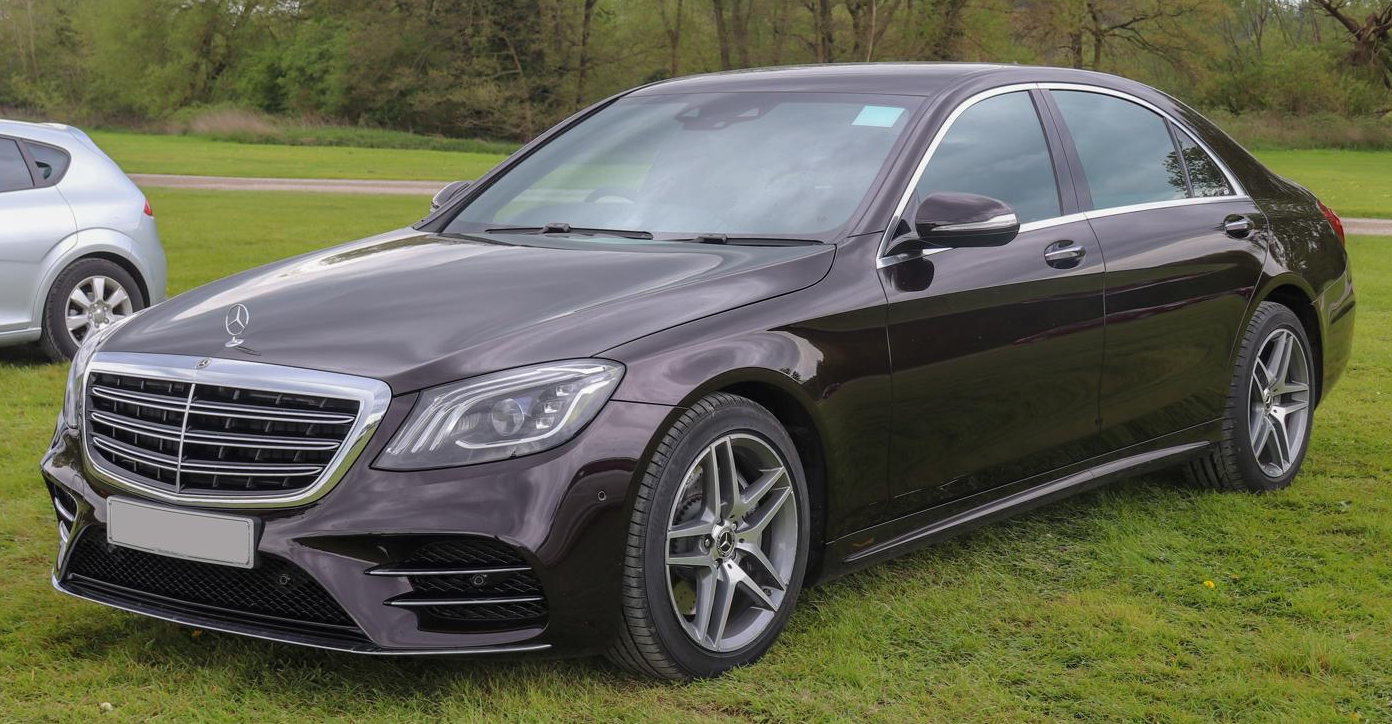
Mercedes-Benz S-Class (2013–present). https://handwiki.org/wiki/index.php?curid=1116688
-
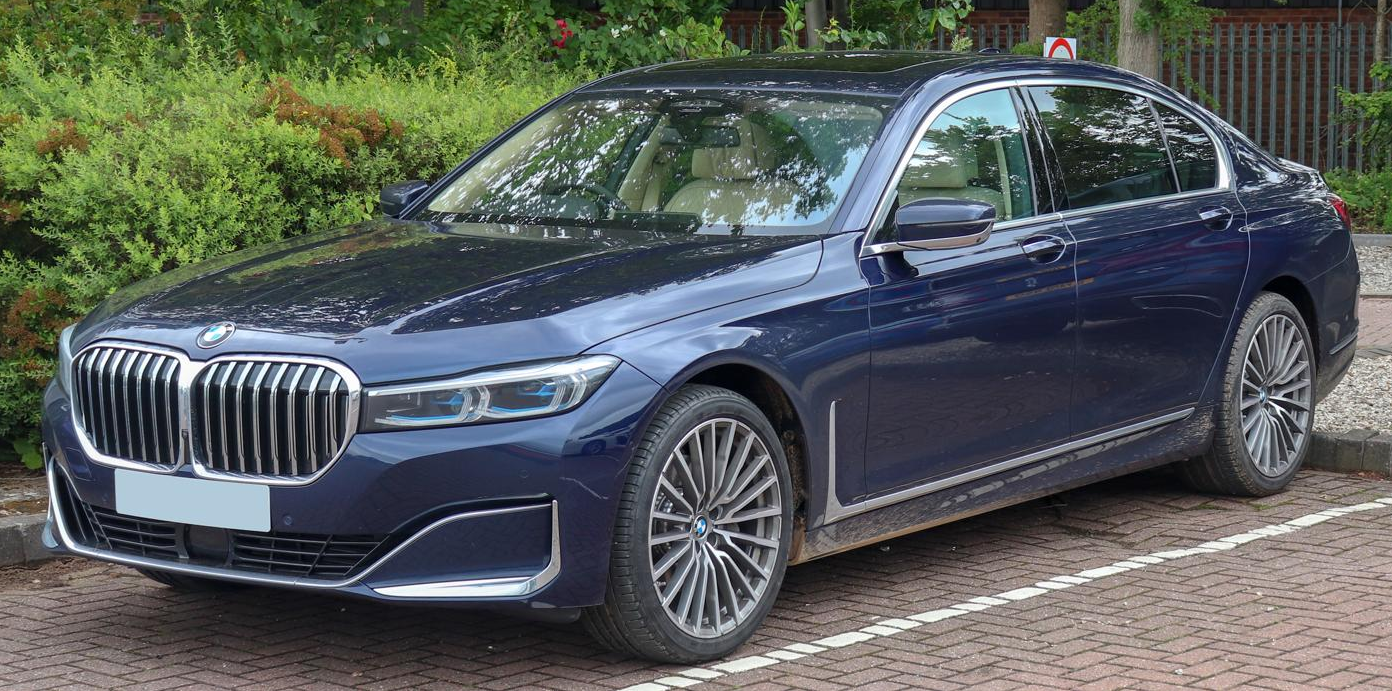
BMW 7 Series (2015–present). https://handwiki.org/wiki/index.php?curid=1708525
-
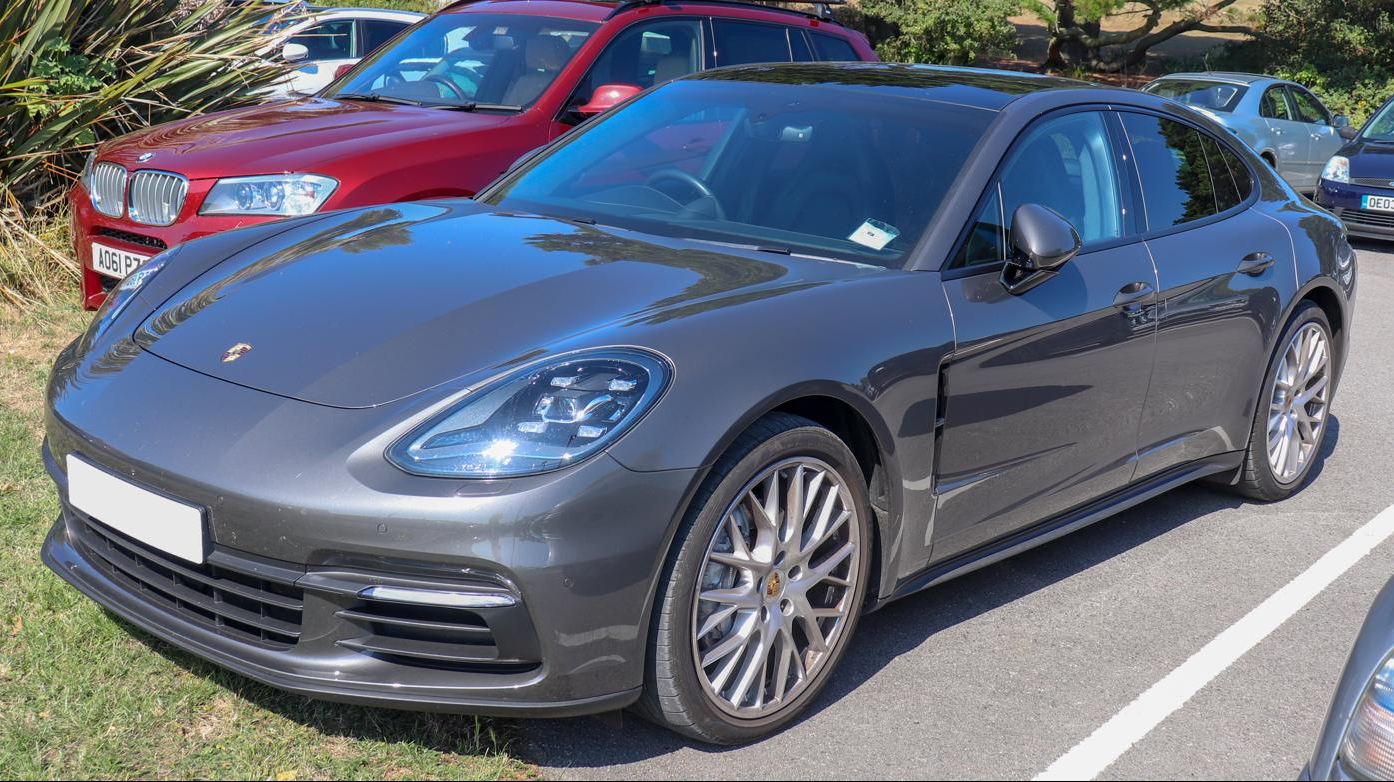
Porsche Panamera (2017–present). https://handwiki.org/wiki/index.php?curid=1331013
-
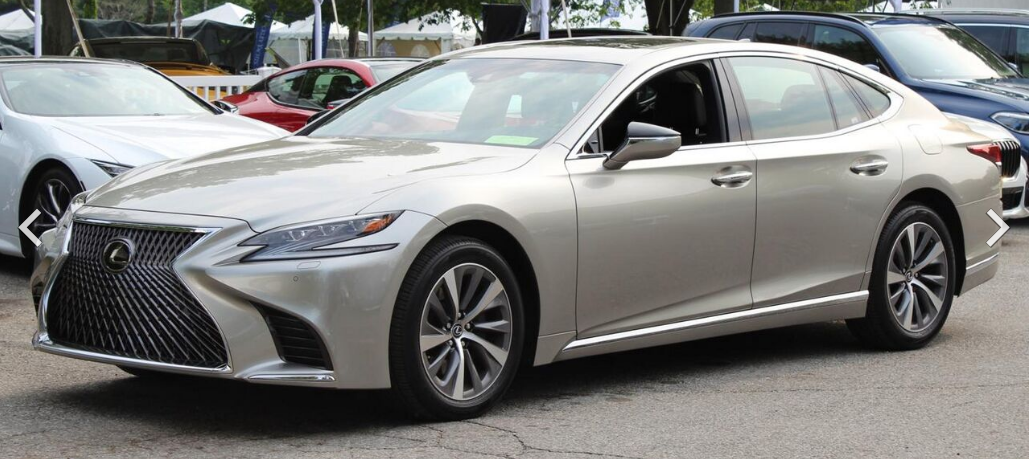
Lexus LS 500h (2017–present). https://handwiki.org/wiki/index.php?curid=1485529
3.5. Ultra-Luxury
Luxury cars costing over US$100,000 (as of 2007) can be considered as "ultra-luxury cars".[42] Examples include the Rolls-Royce Phantom, Maybach 57, Bentley Arnage, and Toyota Century.[42][43][44] High-end sports cars which are targeted towards performance rather than luxury are not usually classified as ultra-luxury cars, even when their cost is greater than US$100,000.[42] The history of a brand and the exclusivity of a particular model can result in price premiums compared to luxury cars with similar features from less prestigious manufacturers.[45]
-
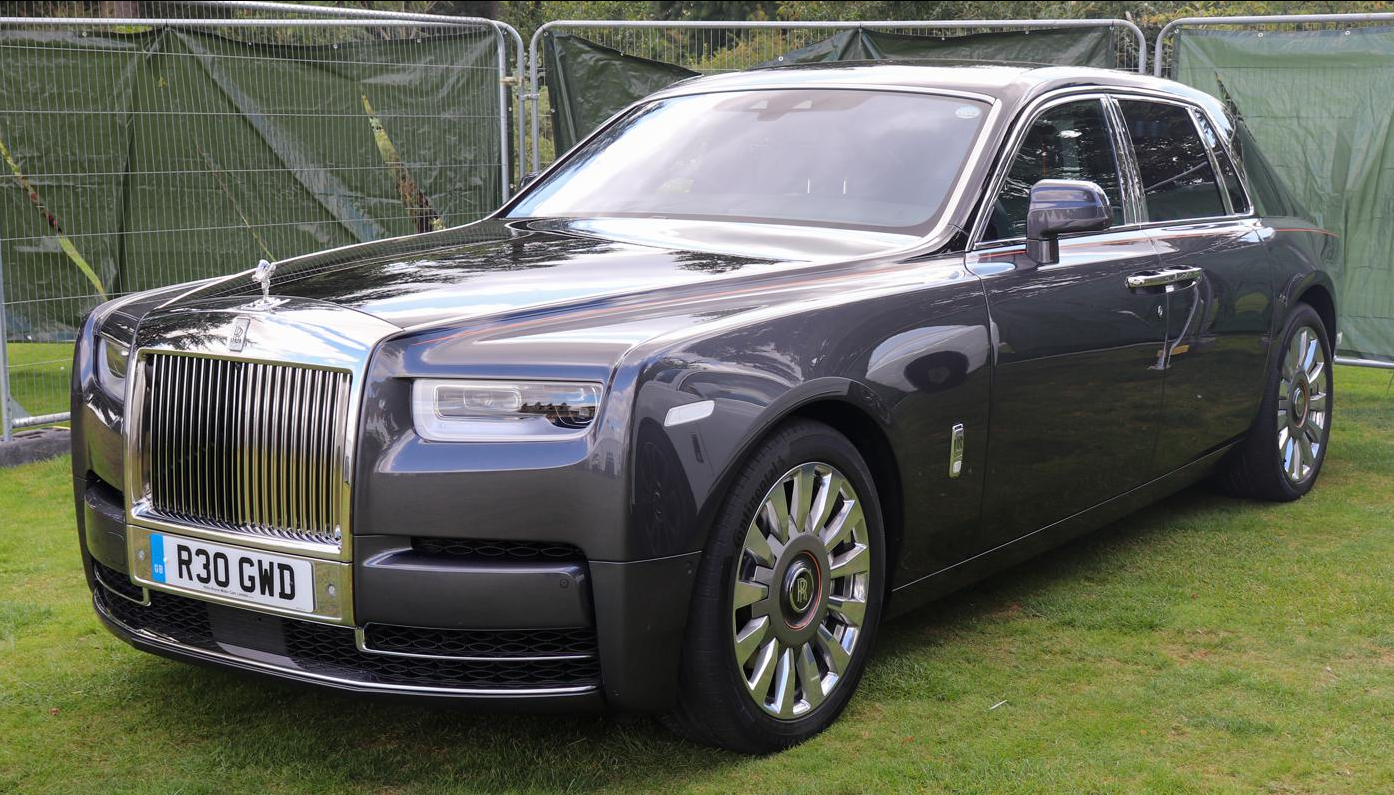
Rolls-Royce Phantom VIII (2017–present). https://handwiki.org/wiki/index.php?curid=1267272
-
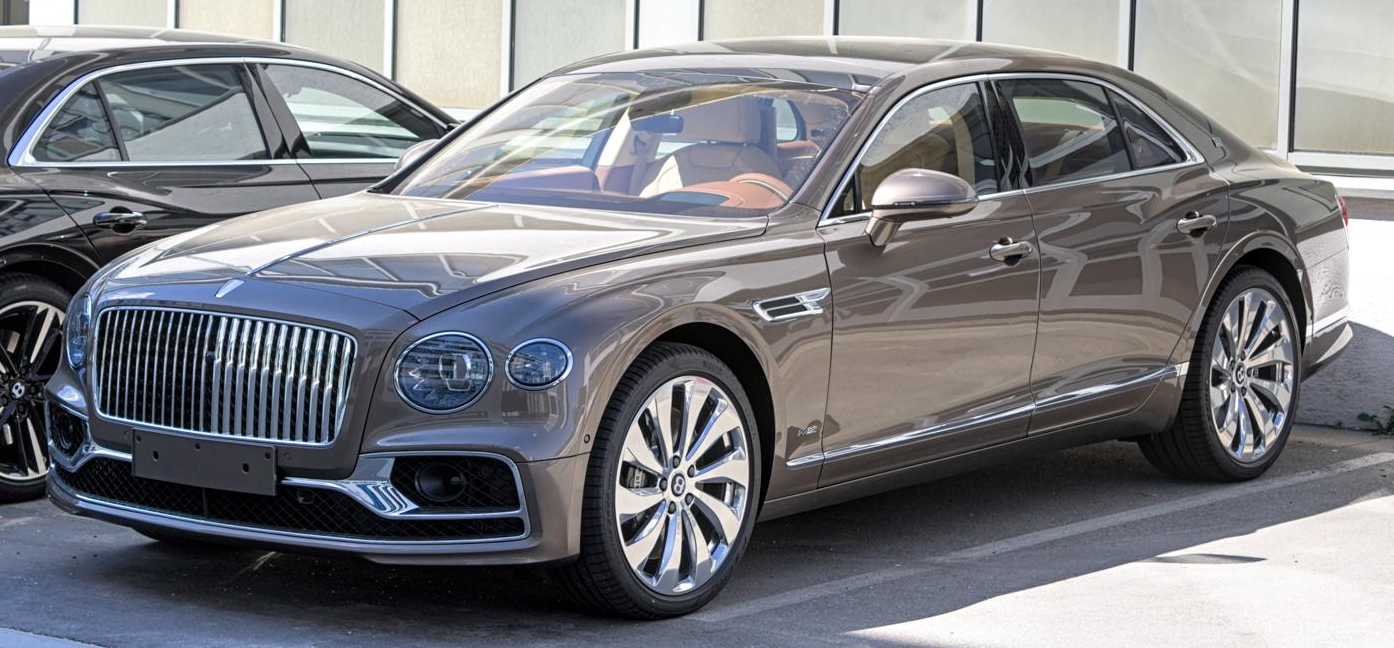
Bentley Flying Spur (2019-present). https://handwiki.org/wiki/index.php?curid=1623913
-
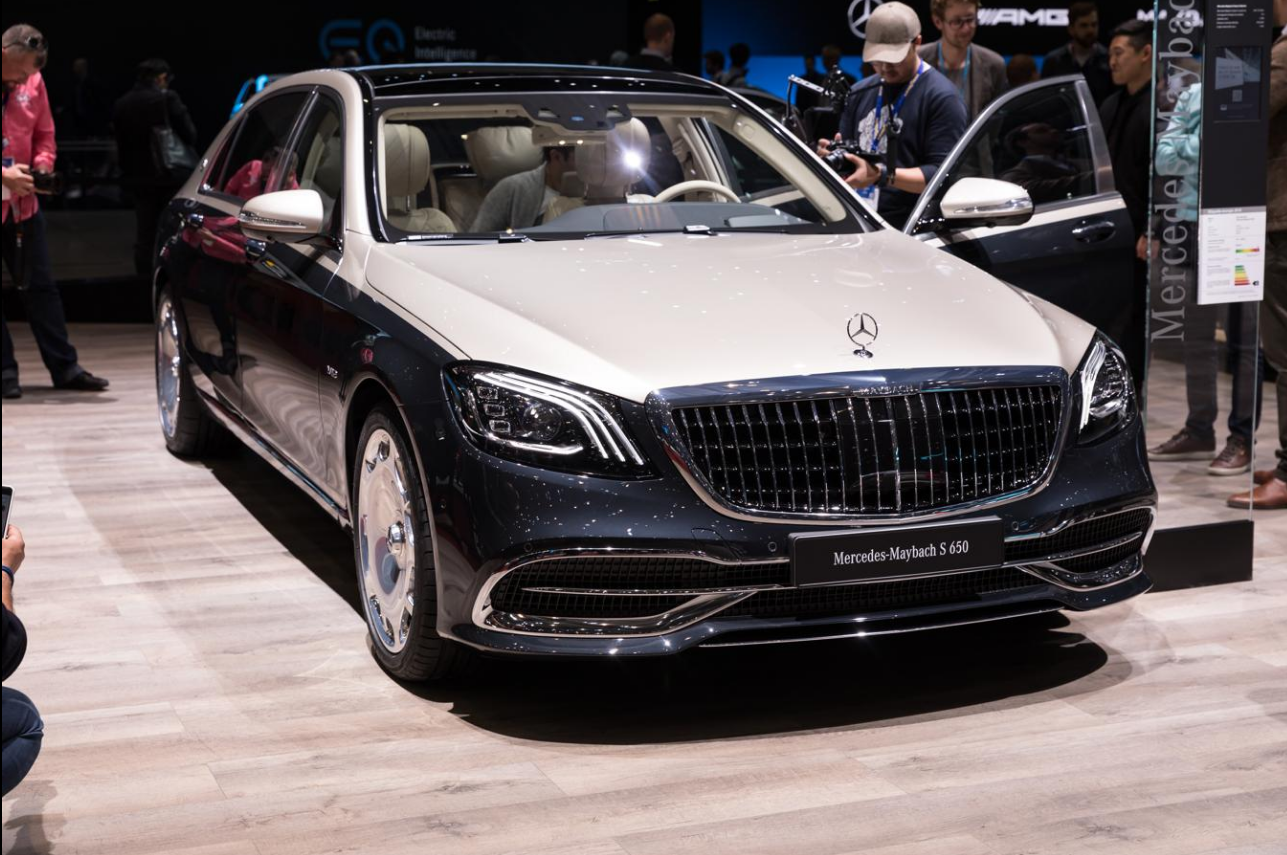
Mercedes-Maybach S650 (2015-present). https://handwiki.org/wiki/index.php?curid=1459074
3.6. Luxury SUV/Crossover
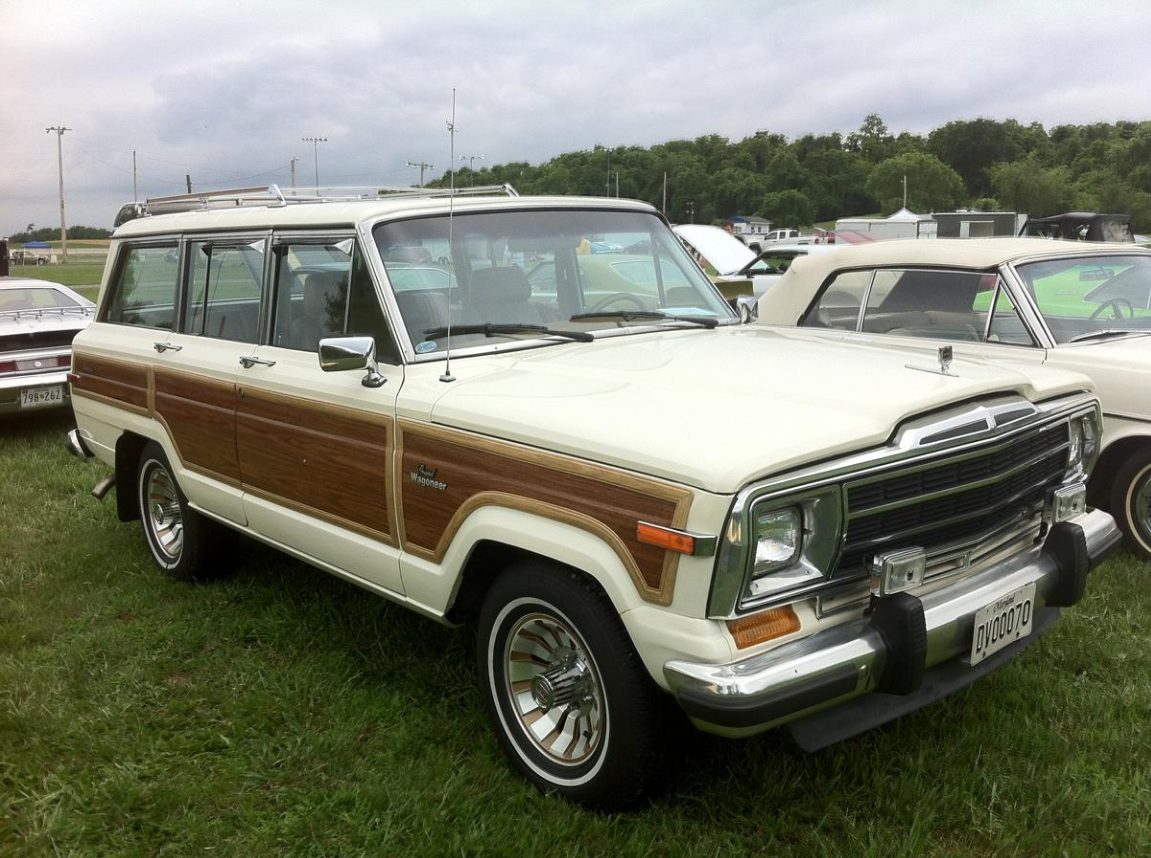

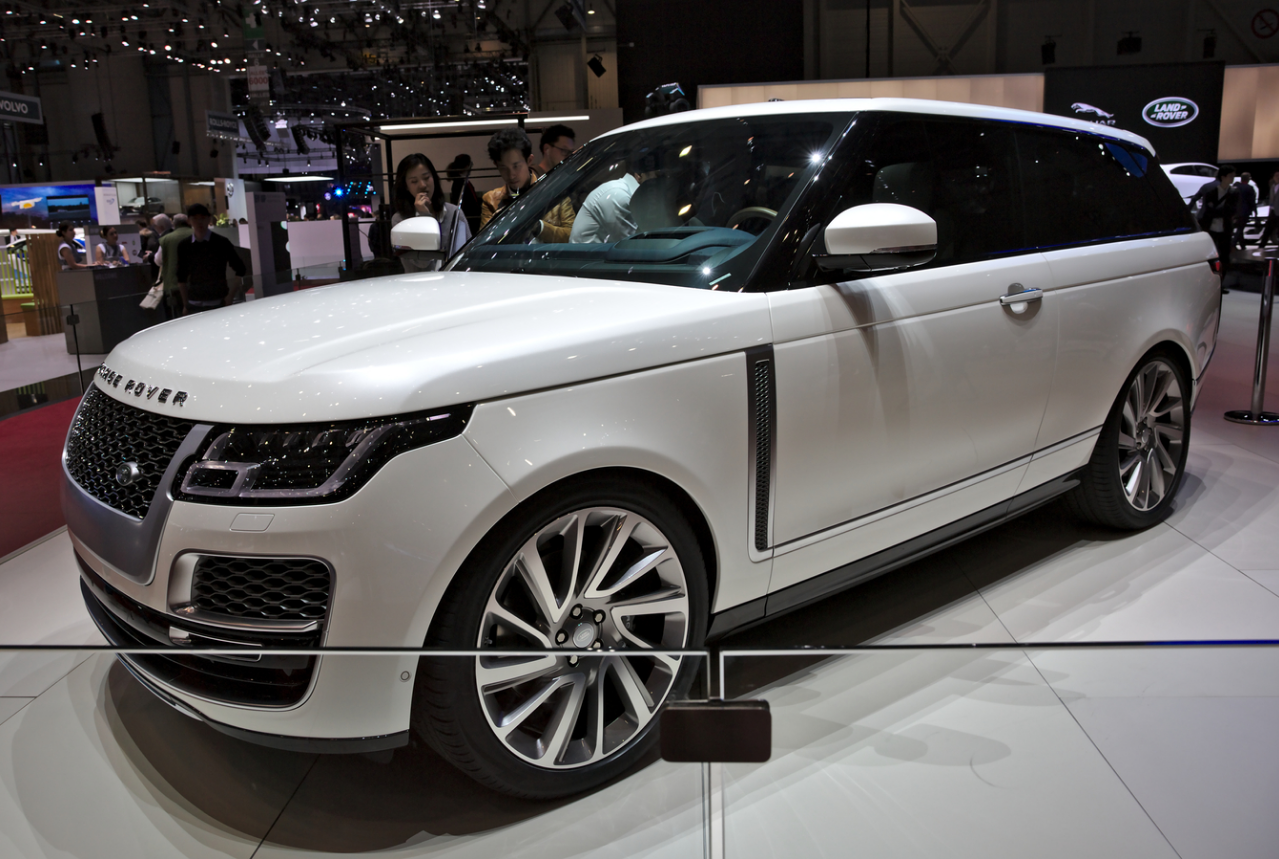
Long before the luxury SUV segment became popular in the 1990s, the vehicle in this segment was the 1966 Jeep Super Wagoneer,[46][47][48](p3) which was marketed at the time as a station wagon. It was the first off-road SUV to offer a V8 engine, automatic transmission, and luxury car trim and equipment.[49] Standard equipment included bucket seating, a center console, air conditioning, seven-position tilt steering wheel, a vinyl roof and gold colored trim panels on the body sides and tailgate.[48](p3) By the late 1970s, optional equipment included an electric sunroof,[48](p4) The 1978 Jeep Wagoneer Limited was the spiritual successor to the Super Wagoneer and was the first four-wheel drive car to use leather upholstery.[48](p5)
Another precursor to the luxury SUV is the Range Rover, which was released in 1970. It was the first road-going vehicle to have a permanent four-wheel drive system, split tailgate, clamshell bonnet and continuous waistline (in the same vehicle).[50] The Range Rover had long-travel coil spring suspension and an aluminium V8 engine.[51] Development of the Range Rover began in 1951.[52]
In the mid 1990s, the SUV market expanded with new entrants. By the mid-1990s, the entry-level Ford Explorer and upscale Jeep Grand Cherokee were the market leaders for SUVs.[53] The fastest growing sector of this market was for the so-called luxury SUVs, which included the Jeep Grand Cherokee ... the Grand Cherokee's allure: "This vehicle is proof you can have a true off-road vehicle without giving up luxuries and amenities" with the Jeep providing a crucial new intangible factor for buyers—image.[54]
The SUV models generated higher profit-margins than passenger cars, and car manufacturers began introducing new luxury SUVs during the late 1990s.[55] SUVs such as the 1995 Lexus LX, 1997 Mercedes-Benz M-Class and 1998 Lincoln Navigator were the first SUVs produced by these luxury car brands. Some of these early luxury SUV models used a unibody construction, becoming part of the trend moving away from the body-on-frame construction traditionally used by off-road vehicles.
During the mid-2000s, SUVs from luxury car brands grew at almost 40 percent in the United States to more than 430,000 vehicles (excluding SUV-only brands like Hummer and Land Rover), at a time when luxury car sales suffered a 1% decline, and non-luxury SUV sales were flat. By 2004, 30 percent of major luxury brands' U.S. sales were SUVs. Crossover SUVs became increasingly popular in the mid-2000s, and manufacturers also began to produce luxury versions of crossovers. The Lexus RX was the earliest luxury crossover on the market, and it has since been the best-selling luxury vehicle in the US.[56] Some luxury crossovers are built on a platform shared with sedans or hatchbacks, for example the Infiniti FX is based upon the same platform as the Infinite G35 sedans and coupes.[57][58] While early luxury crossovers released in the late 1990s have resembled traditional boxy SUVs, later crossovers, such as the Infiniti FX and BMW X6, have been designed with a sporting appearance.[59][60][61]
Despite the increased popularity of crossover models, luxury versions of traditional SUVs remain in production, often being badge-engineered versions of their non-luxury SUVs. Examples include the Lexus LX, Infiniti QX80 and Lincoln Navigator, which are the premium versions of the Toyota Land Cruiser, Nissan Patrol and Ford Expedition respectively.[62]
Research data from the mid-2000s suggested that luxury SUV buyers did not consider traditional luxury cars (e.g. sedans and coupes), therefore the SUV is becoming the key to bringing new customers to the luxury dealerships.[63]
4. Characteristics
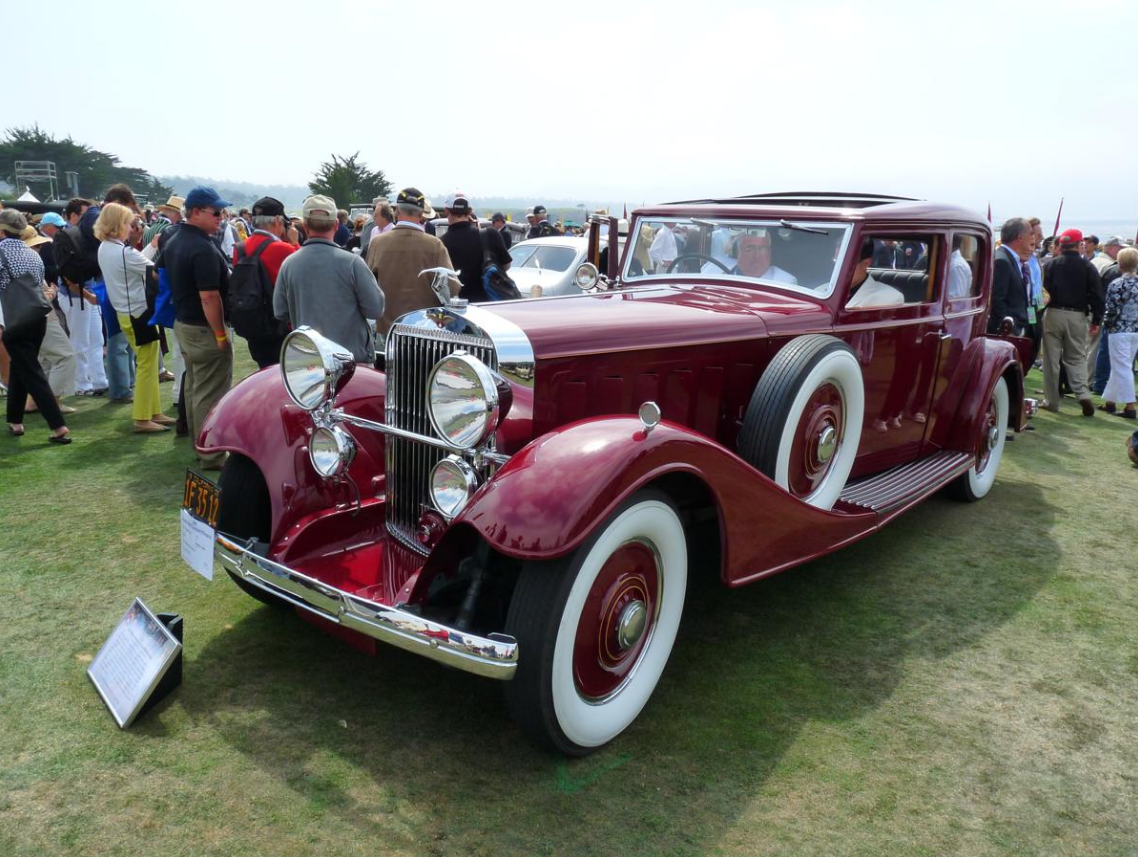
4.1. Features
Luxury cars have traditionally emphasized higher levels comfort and safety,[64] with manufacturers often introducing new safety technologies and comfort amenities on luxury models before they trickle down to mass-market models. Numerous "smart car" features were found on luxury cars as early as 2009.[65]
Luxury vehicles can be a status symbol for conspicuous consumption;[65] however many European luxury car buyers shy away from conspicuous consumption, therefore brands offer buyers the option of removing exterior badges that identify the model name or engine size.[66]
The suspension system of most luxury cars is tuned to prioritise ride quality over handling, however some cars are marketed as "sports luxury" and have greater emphasis on handling characteristics.[67][68]
4.2. Layout and Powertrain
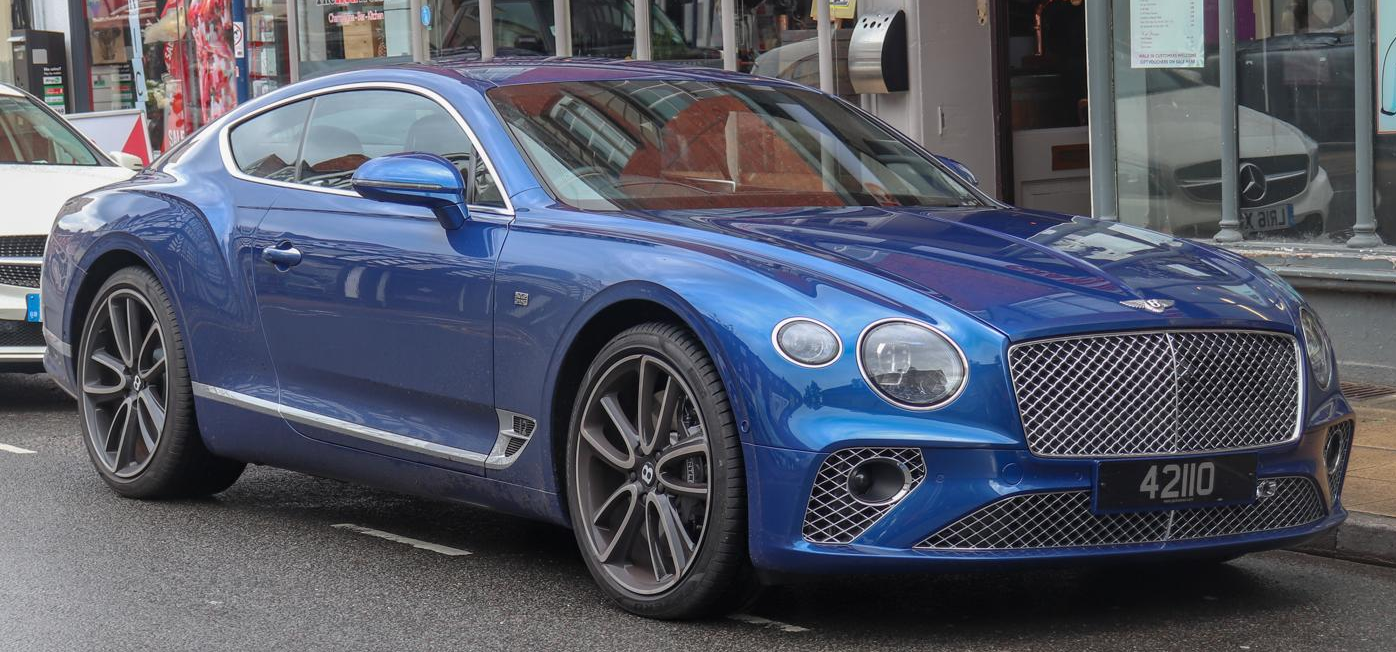
Traditionally, luxury cars have used a front-engine, rear-wheel drive (FR) layout. The FR layout is more expensive to produce and produces lower fuel economy than a front-wheel drive layout, however it allows for larger engines (particularly straight-six, V8, and V12) to be used.[66][69][70][71] Since the introduction of the Bentley Continental GT in 2003, an increasing number of luxury cars have used all-wheel drive.
Many American luxury cars from the 1970s to the 1990s switched to a front-wheel drive layout with transverse engine, due to the Arab Oil Embargo of 1973 and the 1979 fuel crises which eliminated many FR platforms in favor of the more economical front-wheel drive (FF) layout. From the early 2000s, several of these American luxury cars reverted to FR layouts.[72][73][74][75]
5. History
5.1. European Manufacturers
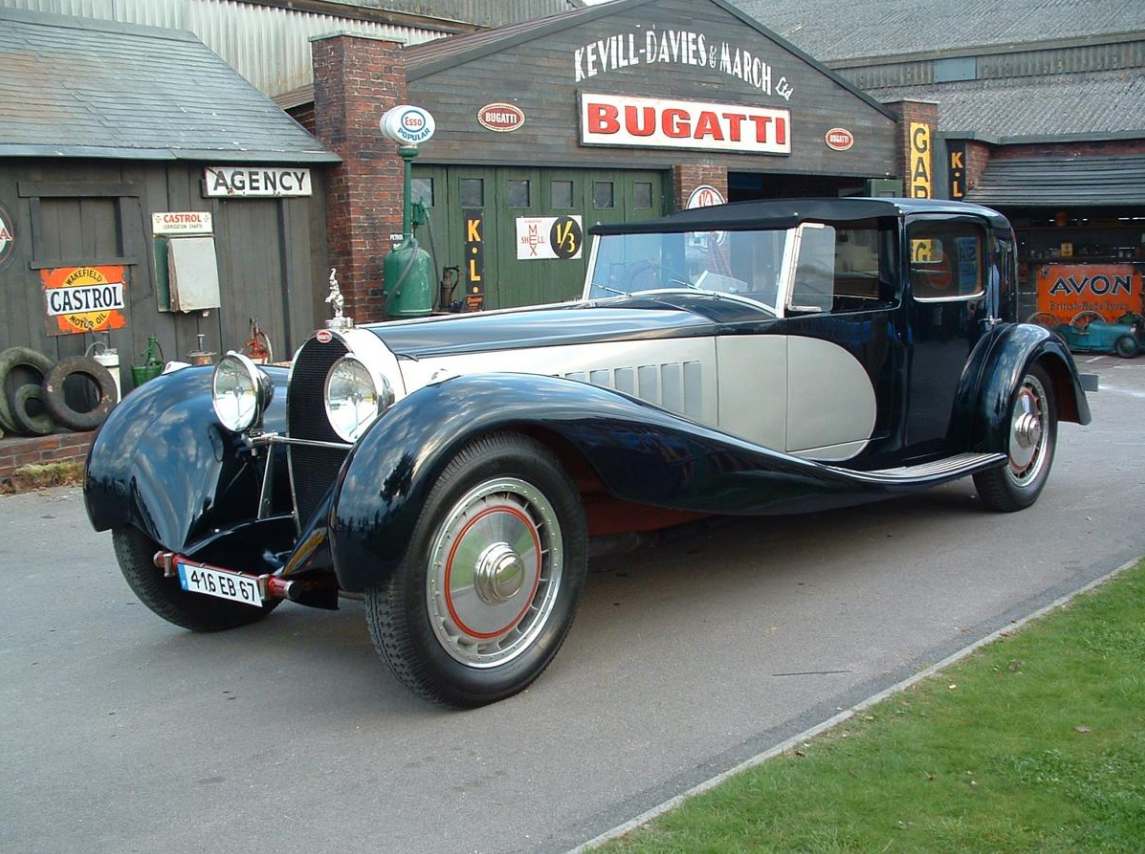
Prior to World War II, a wide array of European producers made luxury cars, including Rolls-Royce, Bugatti, Delage, Delahaye, Talbot-Lago, Bentley and Isotta Fraschini, Aston Martin, Maybach.
France was a leading producer of powerful luxury automobiles prior to World War II.[76] After World War II, the French government used puissance fiscale tax regulations to encourage manufacturers to build cars with small engines, and French motorists to buy them.[76] The Maserati-powered Citroën SM and the Citroën C6 were arguably the last domestic French luxury cars.[77][78] In the 2010s, some French manufacturers have attempted to develop luxury cars, however the lack of a historical legacy has hindered these efforts.[79] In 2014, Citroën introduced DS Automobiles sub-brand to market luxury cars.[80][81]
Following World War II, Germany rose to become an export powerhouse, building on success with the Mercedes-Benz brand, later joined by BMW, which acquired Rolls-Royce Motor Cars, as well as Volkswagen that controls Audi, Porsche, Bentley, Lamborghini, and Bugatti brands.
In the Soviet Union, the manufacturer ZiL (then called Zis) began producing limousines in the mid-1930s. Later GAZ joined the luxury car market in the early 1950s with the "Chaika" model range.
5.2. North American Manufacturers

The luxury car phenomenon began the start of the automobile industry when the wealthy frequently invested in the manufacture of such models to gain the social prestige associated thereby.[82] Emphasis was also placed on custom built coachwork.[83] The 1920s and 1930s were the apogee of production of these very large luxury automobiles from many manufacturers. The significant North Americans manufacturers from 1910-1940 were Cadillac, Chrysler, Cord, Duesenberg, Lincoln, Packard, Peerless, Pierce Arrow and Stutz. Most of them had a straight-eight, V8, V12, or V16 engine. The Great Depression put many luxury car manufacturers out of business; others would hold on before going defunct during the postwar era.
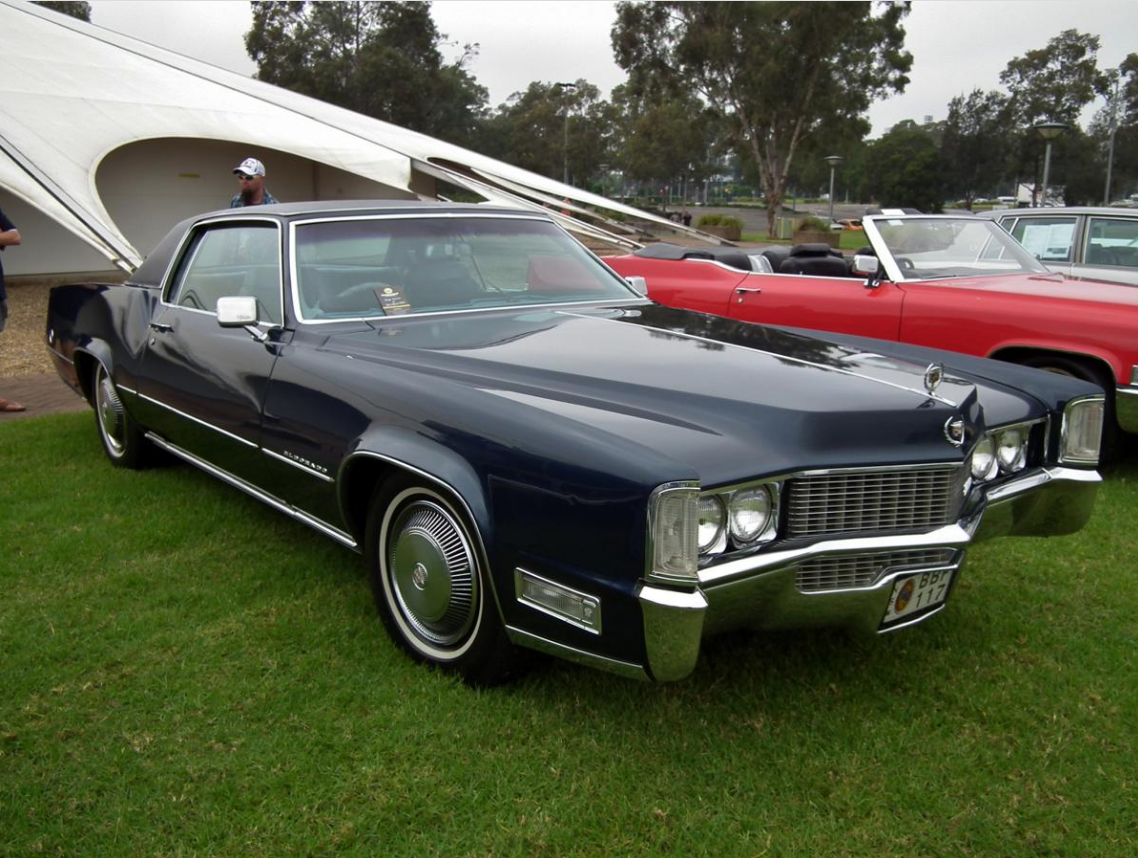
From 1946 to the late 1990s, Cadillac was the top selling brand of luxury cars in the U.S. and Lincoln was second.[84] The most successful and long-running model names during this era were the Cadillac DeVille and Lincoln Continental. The personal luxury car emerged into mass popularity and affordability as an America-specific category of popularly-priced cars made from the 1950s by the four domestic manufacturers (GM, Ford, Chrysler, and AMC) that reached peak popularity in the 1970s. The cars were stylized, mass produced two-door coupés or convertibles, relying on standard components.[85] These distinctively styled cars were targeting the needs of individual customers, not an entire family.[86] The longest running model lines were the 1958-1997 Ford Thunderbird and the 1967-2002 Cadillac Eldorado.
In 1990, American luxury brands dominated with Cadillac selling over a quarter million cars and Lincoln had its best year ever at 231,660 units.[87] However, the market was changing with an ever greater acceptance of smaller, more efficient imported luxury brands while at the same time the domestic manufacturers were downsizing their models with product decisions that backfired on quality and brand respect.[87]
Since the late 1990s, Japanese and German brands have sold the most luxury-type cars in the United States. However the Cadillac Escalade has led the luxury SUV segment sales in the United States since its introduction in 1998, with the highest sales for 15 out of its first 20 years on the market.[88][89]
In the 2000s, both Ford and General Motors produced luxury pickups: the 2002-2013 Cadillac Escalade EXT, 2002-2003 Lincoln Blackwood and 2006-2014 Lincoln Mark LT. In the late 2000s, the Cadillac CTS and Cadillac DTS led to a resurgence in the brand's luxury sedans.[90] The equivalent sedan from the Ford group, the 2008 Lincoln MKS, was also regarded as a significant improvement over previous models.[91] In 2010, BMW was the best-selling luxury vehicle manufacturer by sales, with Audi and Mercedes-Benz the second and third highest selling luxury brands.[92]
5.3. Asian Manufacturers
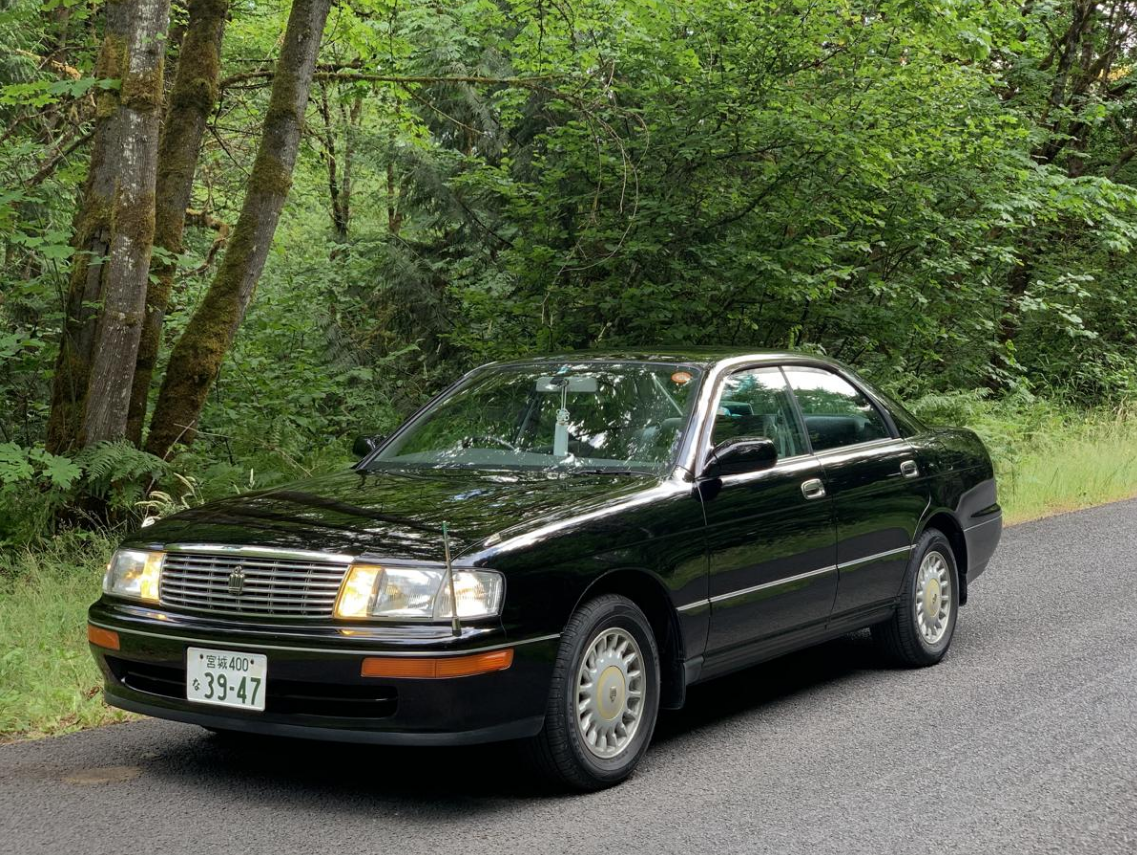
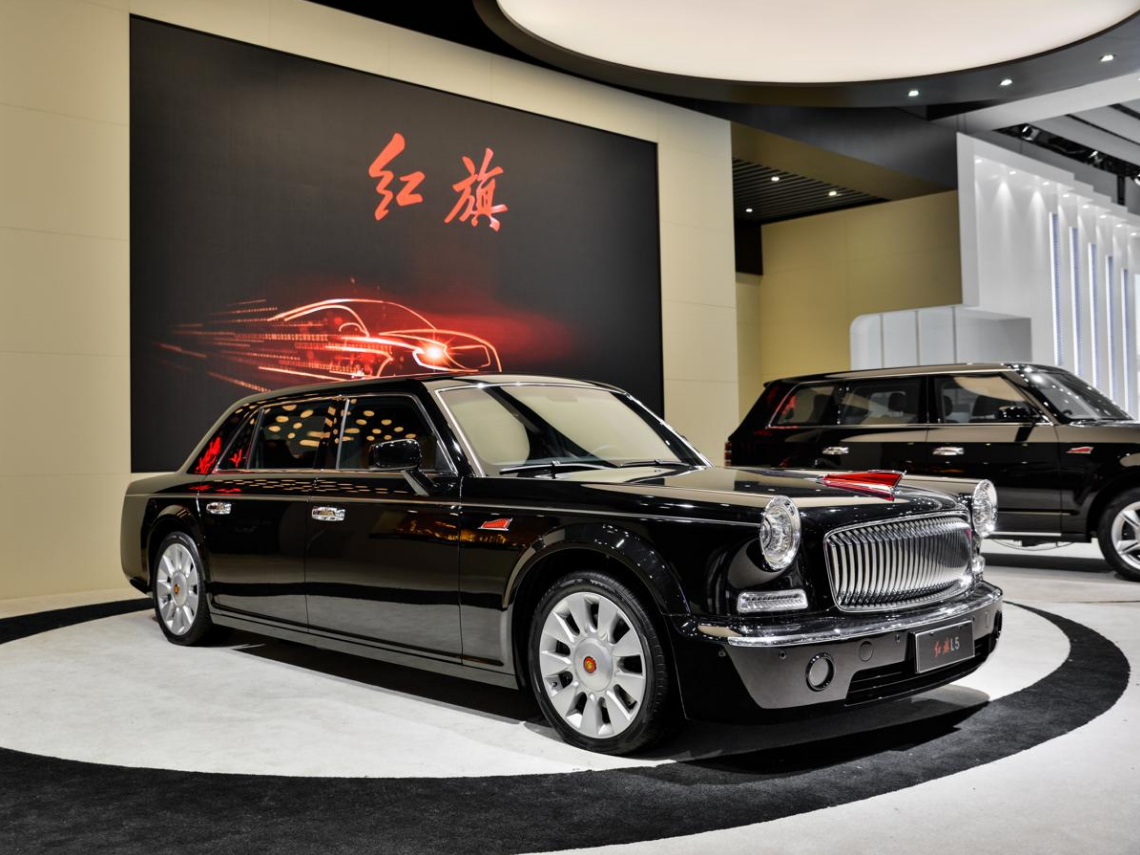
Chinese manufacturer Hongqi was launched in 1958, making it the oldest Chinese luxury car marque.[93]
Japanese manufacturers have been producing luxury cars since the 1950s, including the Toyota Crown (1955–present),[94][95] Prince/Nissan Gloria (1959–2004), Nissan Cedric (1960–2015), Mitsubishi Debonair (1964–1998), Nissan President (1965–2010), Toyota Century (1967–present), Mazda Luce/929 (1969–1991) and Honda Legend (1985–present).
Since the 1980s, overseas sales of Japanese luxury cars have increased, challenging the traditional European luxury brands.[96]
Several Asian manufacturers have created sub-brands for the marketing of luxury cars. The first of these was the 1986 launch of Acura (a Honda sub-brand), followed by Lexus (Toyota) in 1989, Infiniti (Nissan) in 1989 and Genesis (Hyundai) in 2015.[96]
5.4. Global Financial Crisis
The late-2000s global financial crisis was the first time since the Great Depression of the 1930s that the luxury car market suffered considerably, something not seen in previous economic downturns. Many such customers saw their net worth decline following the collapse in financial markets and real-estate values.[65][97] For example, some of the steepest dropoffs came at the high end, including the BMW 7 Series and Rolls-Royce Phantom, and in 2010 Mercedes-Benz unexpectedly dropped the price of the W212 E-Class. The unusually sharp decline in luxury car sales have led observers to believe that there is a fundamental shift and reshaping of the luxury automotive market, with one industry official suggesting that the marques no longer command the premiums that they used to, and another saying that conspicuous consumption was no longer attractive in poor economic conditions.[96] Additionally, mainstream brands have been able to offer amenities and devices such as leather, wood, and anti-lock brakes, previously found only on luxury cars, as the costs decline.[96]
However, luxury vehicle sales did not collapse as much as their non-luxury counterparts.[98][99] This was aided by growing interest in luxury vehicles from emerging markets such as China and Russia.[96]
Sales in the entry-level luxury segment remained strong throughout the GFC, due to prices being lowered to compete with well-equipped non-luxury cars.[100][101] For example, in Canada, several luxury manufacturers set sales records in August 2009, due mostly to discounted pricing on entry-level luxury vehicles.[102][103]
References
- Roe, Fred (1986). Duesenberg – The Pursuit of Perfection. Dalton Watson. ISBN 978-0-901564-37-5.
- "1930 Isotta Fraschini Tipo 8A news, pictures, and information". conceptcarz.com. http://www.conceptcarz.com/vehicle/z6808/Isotta-Fraschini-Tipo-8A.aspx. Retrieved 2014-03-11.
- "The History of Lexus" (Press release). US: Lexus. 2013-04-19. Retrieved 2019-01-10. http://pressroom.lexus.com/releases/history+lexus.htm
- "A Look at Bentley Through the Ages" (in en). https://robbreport.com/motors/cars/bentley-history-eg18-2836509/. Retrieved 2019-01-06.
- "Bentley History". http://www.rolls-royceandbentley.co.uk/bentley-history.html. Retrieved 2019-01-06.
- "Hyundai Genesis Review". Car and Driver. US. http://www.caranddriver.com/hyundai/genesis. Retrieved 2016-03-22.
- Lorio, Joe (2015-11-04). "Genesis 2.0: Hyundai’s Genesis to Become Separate Luxury Brand". Car and Driver (US). http://blog.caranddriver.com/genesis-2-0-hyundais-genesis-to-become-separate-luxury-brand/. Retrieved 2016-03-22.
- Wendler, Andrew (January 2012). "2013 Acura ILX Concept – This concept previews a production Civic-based compact for Honda's luxury brand". Car and Driver. http://www.caranddriver.com/news/2013-acura-ilx-concept-photos-and-info-news. Retrieved 2014-03-11.
- "Tax Laws Amendment (Luxury Car Tax) Bill 2008". Australian Government ComLaw. 2008-06-13. http://www.comlaw.gov.au/Details/C2008B00131. Retrieved 2014-08-23.
- "The breakdown: Luxury Car Tax – Why luxury cars cost too much in Australia" (in en-au). 2017-06-08. https://www.drive.com.au/motor-news/the-breakdown-luxury-car-tax-20170603-gwjmpt.html. Retrieved 2019-01-08.
- "Luxury car tax rate and thresholds" (in en-AU). https://www.ato.gov.au/Rates/Luxury-car-tax-rate-and-thresholds/. Retrieved 2019-01-08.
- "Case No COMP/M.1406 – Hyundai/Kia – Regulation (EEC) No 4064/89 Merger Procedure". Office for Official Publications of the European Communities. 1999-03-17. http://ec.europa.eu/competition/mergers/cases/decisions/m1406_en.pdf. Retrieved 2014-03-11.
- "Case No IV/M.1326 – Toyota/Daihatsu – Merger Decision IV/M.1326". Office for Official Publications of the European Communities. 1998-11-06. http://ec.europa.eu/competition/mergers/cases/decisions/m1326_en.pdf. Retrieved 2014-03-11.
- "Case No COMP/M.5219 – VWAG/OFH/VWGI – Regulation (EC) No 139/2004 Merger Procedure". Office for Official Publications of the European Communities. 2008-11-25. http://ec.europa.eu/competition/mergers/cases/decisions/m5219_20080925_20310_en.pdf. Retrieved 2014-03-11.
- Mingot, Leo (2012-09-14). "Ecologie: les reines du CO2" (in French). Auto News Fr. Archived from the original on 2012-04-19. https://web.archive.org/web/20120419005216/http://www.autonews.fr/Ecologie/Actualite/CO2-classement-bonus-malus-302439/. Retrieved 2014-03-11.
- "Crashtest: Obere Mittelklasse Übersicht A – Z" (in German). ÖAMTC. http://www.oeamtc.at/?id=2500%2C1139059%2C%2C. Retrieved 2014-03-11.
- "Car of the Year Russia". 2015. http://autogoda.ru.
- "ACRISS Car Classification Code". http://www.autocarbase.com/2012/11/acriss-car-classification-code.html. Retrieved 2018-12-07.
- "2014 Mercedes-Benz CLA-Class Review". Edmunds.com. http://www.edmunds.com/mercedes-benz/cla-class/2014/. Retrieved 2014-03-11.
- "Compact Premium Rental in United Kingdom". https://www.alamo.com/en_US/car-rental/cars/gb/ddar-compact-premium.html/countryCode=GB.html. Retrieved 2019-01-10.
- "Daimler-Nissan JV To Build Next-Gen CLA, Unnamed A-Class At Mexican Plant". 2014-06-24. https://www.thetruthaboutcars.com/2014/06/daimler-nissan-jv-to-build-next-gen-cla-unnamed-a-class-at-mexican-plant/. Retrieved 2019-01-10.
- "2011 AutoPacific Ideal Vehicle Awards: Premium Compact Car". https://www.autobytel.com/auto-news/awards/2011-autopacific-ideal-vehicle-awards-premium-compact-car-102735/. Retrieved 2019-01-10.
- "Premium-Compacts – Audi A3, BMW 1 series, Volvo C30, MINI". Squidoo. Archived from the original on 2012-06-23. https://www.webcitation.org/68dIr87ah. Retrieved 2014-03-11.
- Proudfoot, Dan (2012-09-10). "Audi luxury compact is ready for the future". The Globe and Mail (Toronto). https://www.theglobeandmail.com/globe-drive/new-cars/new-car-reviews/audi-luxury-compact-is-ready-for-the-future/article4316959/. Retrieved 2014-03-11.
- Kane, Mark (2019-02-21). "Electric Cars Outsell Hybrids In California: Tesla Model 3 Tops In Class". Inside EVs. https://insideevs.com/california-electric-car-sales-2018/.
- Cato, Jeremy (2013-11-29). "Uptown Runs Downtown with Less Expensive Autos". ClassifiedsTT. http://classifiedstt.com/uptown-runs-downtown-with-less-expensive-autos. Retrieved 2014-03-11.
- Cotta, Rick (2008-10-30). "The Consumer Guide to 2008 Premium Compact Cars". Archived from the original on 2008-11-09. https://web.archive.org/web/20081109121246/http://consumerguideauto.howstuffworks.com/2008-premium-compact-car-buying-guide1.htm. Retrieved 2012-04-25.
- "Car Rankings: Best Upscale Midsize Cars – Best Cars & Trucks". U.S. News and World Report (U.S. News Rankings & Reviews). Archived from the original on 2015-04-08. https://web.archive.org/web/20150408080821/http://usnews.rankingsandreviews.com/cars-trucks/rankings/Upscale-Midsize-Cars/. Retrieved 2015-04-08.
- "Jaguar XJ Review (2019)". https://www.autocar.co.uk/car-review/jaguar/xj. Retrieved 2019-01-13.
- "Mercedes-Benz S-Class saloon review". https://www.parkers.co.uk/mercedes-benz/s-class/. Retrieved 2019-01-13.
- "New Audi A8 55 TFSI 2018 review" (in en). https://www.autoexpress.co.uk/audi/a8/103272/new-audi-a8-55-tfsi-2018-review. Retrieved 2019-01-13.
- "Lexus LS 500h Saloon (2017 – ) review". https://www.autotrader.co.uk/content/car-reviews/lexus-ls-500h-review-saloon-2017. Retrieved 2019-01-13.
- "2019 Audi A8 First Look". https://www.motortrend.com/news/2019-audi-a8-first-look-review/. Retrieved 2019-01-13.
- "2019 Lexus LS 500: A suitably cushy flagship with a polarizing visual edge". https://autoweek.com/article/car-reviews/2019-lexus-ls-500-suitably-cushy-flagship-polarizing-visual-edge. Retrieved 2019-01-13.
- "2019 Infiniti Q70 Reviews" (in en). https://www.caranddriver.com/infiniti/q70. Retrieved 2019-01-13.
- "2018 Genesis G90 Review, Ratings, Specs, Prices, and Photos" (in en). https://www.thecarconnection.com/overview/genesis_g90_2018. Retrieved 2019-01-13.
- "2010 Mercedes-Benz S-Class – Consumer Guide Automotive". luxuryvehiclealabama.tumblr.com. http://luxuryvehiclealabama.tumblr.com/.
- Winfield, Barry (January 2007). "2006 Jaguar Super V-8 vs. 2007 M-B S550, 2006 Audi A8L, 2007 Lexus LS460L, 2006 BMW 750Li – Comparison Tests". Car and Driver. http://www.caranddriver.com/reviews/comparisons/07q1/2006_jaguar_super_v-8_vs._2007_m-b_s550_2006_audi_a8l_2007_lexus_ls460l_2006_bmw_750li-comparison_tests. Retrieved 2014-03-11.
- "European sales 2017 Limousine segment". http://carsalesbase.com/european-sales-2017-limousine-segment/. Retrieved 2019-01-13.
- "US car sales analysis 2018 Q2 – Limousine segment". 2018-08-13. http://carsalesbase.com/us-car-sales-analysis-2018-q2-limousine-segment/. Retrieved 2019-01-13.
- "Cadillac CT6". caranddriver.com. http://www.caranddriver.com/cadillac/ct6.
- "Ultra-Luxury Cars". Archived from the original on 2014-07-07. https://web.archive.org/web/20140707125331/http://editorial.autos.msn.com/article.aspx?cp-documentid=434553.
- "18 of the Most Luxurious Cars You Can Buy". 2018-11-16. https://www.roadandtrack.com/car-culture/buying-maintenance/g6830/best-luxury-cars-brands/. Retrieved 2019-01-15.
- Liberman, Jonny (26 Jun 2019). "Inside Look: How the Toyota Century Rivals Rolls-Royce". https://www.motortrend.com/news/we-dont-get-it/. Retrieved 23 August 2019.
- Ulrich, Lawrence (2011-09-30). "A Threat to the Job Security of Chauffeurs". The New York Times. https://www.nytimes.com/2011/10/02/automobiles/autoreviews/a-threat-to-the-job-security-of-chauffeurs.html. Retrieved 2014-03-11.
- "A Look Back at the History of the Jeep Wagoneer". https://www.miamilakesautomall.com/history-of-the-jeep-wagoneer. Retrieved 2019-01-19.
- Gunnell, John (2005). American Cars of the 1960s: A Decade of Diversity. Krause Publications. p. 213. ISBN 978-0-89689-131-9.
- "1966 Jeep Wagoneer". 2007-08-29. http://auto.howstuffworks.com/1963-1992-jeep-wagoneer-and-grand-wagoneer.htm. Retrieved 2014-03-11.
- Foster, Patrick (January 2008). "1963 Jeep Wagoneer – Landmark Vehicle". 4 Wheel Drive & Sport Utility Magazine. http://www.4wdandsportutility.com/features/jeep/0801_4wd_1963_jeep_wagoneer/index.html. Retrieved 2014-03-11.
- "Range Rover: A History" (in en-XI). https://www.landrover.com/explore-land-rover/onelife/heritage/range-rover-history.html. Retrieved 2019-01-19.
- "The Land Rover History: Timeline". https://www.winwaed.com/landy/history/timeline.php. Retrieved 2019-01-19.
- "History of the Range Rover: in pictures" (in en-IN). https://www.msn.com/en-in/autos/photos/history-of-the-range-rover-in-pictures/ss-AAp43tG#image=3. Retrieved 2019-01-19.
- Oldham, Scott; Lamm, Michael (May 1996). "Happy 100th!". Popular Mechanics 173 (5). https://books.google.com/books?id=MWUEAAAAMBAJ&pg=PA58&lpg=PA58&dq=The+Big+Three,+especially+with+Ford+Explorer+and+Jeep+Grand+Cherokee,+dominate+the+market+for+the+red-hot+sport/utilities. Retrieved 2014-03-11.
- Riggs, Thomas (2006). Encyclopedia of major marketing campaigns. 2. Gale Group. p. 390. ISBN 978-0-7876-7356-7. https://books.google.com/books?id=BKhWAAAAYAAJ&q=the+fastest+growing+sector+of+this+market+was+for+the+so-called+luxury+SUVs,+which+included+the+Jeep+Grand+Cherokee.+The+company's+website+explained+the+allure:+%22This+vehicle+is+proof+you+can+have. Retrieved 2014-03-11.
- Frankel, Ernst G. (2006). Challenging American Leadership: Impact of National Quality on Risk of Losing Leadership. Springer-Verlag. p. 35. ISBN 978-1-4020-4892-0.
- Gross, Ken (2000-09-01). "Lexus The Truckmaker". Automotive Industries. Archived from the original on 2008-12-30. https://web.archive.org/web/20081230185535/http://www.allbusiness.com/transportation/motor-vehicle-manufacturing/635959-1.html. Retrieved 2008-11-15.
- Peter, John (March 2003). "Infiniti's 'Bionic Cheetah' chases Porsches and BMWs". Automotive Industries. http://findarticles.com/p/articles/mi_m3012/is_3_183/ai_99048983/. Retrieved 2010-12-07.
- Laturnus, Ted (2012-08-23). "‘Bionic cheetah' married performance, practicality". Toronto: The Globe and Mail. https://www.theglobeandmail.com/globe-drive/used-cars/used-cars-archive/bionic-cheetah-married-performance-practicality/article1145752/. Retrieved 2014-03-11.
- "Inifiti FX35 Review (MY 2010)". Edmunds.com. 2009. Archived from the original on 2009-12-11. https://web.archive.org/web/20091211182435/http://www.edmunds.com/infiniti/fx35/review.html. Retrieved 2010-01-21.
- Thomas, David (2008-09-15). "2009 Infiniti FX35". cars.com. http://www.cars.com/infiniti/fx35/2009/expert-reviews/. Retrieved 2014-03-11.
- Dyer, Ezra (2008-06-22). "New-Age Mutant Ninja Wagons". The New York Times. https://www.nytimes.com/2008/06/22/automobiles/autoreviews/22AUTO.html. Retrieved 2014-03-11.
- "2014 Lexus LX Reviews, Pictures and Prices". U.S. News Rankings and Reviews. http://usnews.rankingsandreviews.com/cars-trucks/Lexus_LX/. Retrieved 2014-03-11.
- Isidore, Chris (2004-01-07). "Luxury SUVs: key to growth for luxury brands, SUV segment". Money.cnn.com. http://money.cnn.com/2004/01/06/news/companies/detroit_luxury_suv/. Retrieved 2014-03-11.
- Lienert, D. (2007-03-11). "Safest Cars 2007". Forbes. Archived from the original on 2007-06-01. https://web.archive.org/web/20070601181133/http://www.forbes.com/vehicles/2007/05/11/car-safe-vehicle-forbeslife-cx_dl_0514safecars_slide_12.html?thisSpeed=15000. Retrieved 2007-08-15.
- Elliott, Hannah (2009-02-27). "Ten Reasons To Buy A Luxury Car". Forbes.com. https://www.forbes.com/2009/02/27/luxury-expensive-cars-lifestyle-vehicles_luxury_cars.html. Retrieved 2014-03-11.
- Ulrich, Lawrence (2010-08-13). "In Some Classes, Buyers Are Not Ready to Give Up Their V-8s". The New York Times. https://www.nytimes.com/2010/08/15/automobiles/15LUXO.html?_r=1&ref=automobiles. Retrieved 2014-03-11.
- Chase, Chris (2009-09-09). "Test Drive: 2009 BMW 328i xDrive". Autos. Canada. http://www.autos.ca/car-test-drives/test-drive-2009-bmw-328i-xdrive/. Retrieved 2016-04-27.
- "2010 Buick LaCrosse CXS vs. 2009 Lexus ES 350 Comparison Test and Video on Inside Line". Edmunds.com. 2009-08-30. Archived from the original on 2009-09-04. https://web.archive.org/web/20090904224211/http://www.edmunds.com/insideline/do/Drives/Comparos/articleId=156106?. Retrieved 2009-09-14.
- "Automaker Ratings". Rearwheeldrive.org. http://www.rearwheeldrive.org/rwd/rwdrate.htm. Retrieved 2009-09-29.
- Stewart, Ben. "Comparison Test: Front-Wheel Drive Vs. Rear-Wheel Drive". Popular Mechanics. http://www.popularmechanics.com/automotive/new_cars/1266931.html. Retrieved 2009-09-29.
- "U.S. luxury car manufacturers are rethinking rear wheel drive. (Auto Weekend)"]. The Washington Times (Washington, D.C.: Highbeam.com). 2009-10-13. http://www.highbeam.com/doc/1G1-66027126.html. Retrieved 2011-01-17.
- Meredith, Robyn (1999-11-12). "The media: Advertising: Cadillac is redesigning its image before its retooled cars appear". The New York Times. https://www.nytimes.com/1999/11/12/business/media-business-advertising-cadillac-redesigning-its-image-before-its-retooled.html. Retrieved 2012-09-14.
- Kaus, Mickey (2003-05-09). "Chrysler brings back rear-wheel drive". Slate. http://www.slate.com/articles/news_and_politics/gearbox/2003/05/advance_to_the_rear_2.html. Retrieved 2014-03-11.
- Johnson, Drew (2008-02-14). "2011 Chrysler 300, Dodge Charger to remain rear-wheel drive". Leftlanenews. http://www.leftlanenews.com/2011-chrysler-300-dodge-charger-to-remain-rear-wheel-drive.html. Retrieved 2014-03-11.
- "Lincoln Town Car wins stay of execution". Spero News. 2006-09-19. http://www.speroforum.com/site/article.asp?id=5487. Retrieved 2014-03-11.
- Sedgwick, Michael (2017-03-01). "The Facel Vega 1954 – 1964". http://www.facel-vega.com/mageng1.shtml. Retrieved 2018-02-01.
- "Is The French Luxury Car Finally Back ?". 2014-04-09. https://oppositelock.kinja.com/is-the-french-luxury-car-finally-back-1561245252. Retrieved 2018-02-01.
- Holloway, Hilton (2012-12-12). "Is it time to bid adieu to the French luxury car?". https://www.autocar.co.uk/opinion/industry/it-time-bid-adieu-french-luxury-car. Retrieved 2018-02-01.
- Schechner, Sam; Pearson, David (2012-10-05). "French Begin New Luxury Car Drive". Wall Street Journal. https://www.wsj.com/articles/SB10000872396390443862604578030450768236348. Retrieved 2018-02-01.
- "DS range: Our current vehicles". https://www.dsautomobiles.com/en/ds-models.html. Retrieved 2018-02-01.
- Barry, Maggie (2018-01-18). "DS 7 – lighting the way and pushing ahead". Scottish Daily Record. https://www.dailyrecord.co.uk/lifestyle/motoring/ds-7-lighting-way-pushing-11874644. Retrieved 2018-02-01.
- Davis, Donald Finlay (1988). Conspicuous production: automobiles and elites in Detroit, 1899-1933. Temple University Press. ISBN 9780877225492. https://archive.org/details/conspicuousprodu0000davi.
- Carson, Richard Burns (1988). The Olympian Cars: the great American luxury automobiles of the twenties & thirties (Second ed.). Beaver's Pond Press. ISBN 9781890676025.
- O'Dell, John (1999-05-06). "Cadillac Apologizes to Lincoln for Inflating Sales Numbers". Los Angeles Times. http://articles.latimes.com/1999/may/06/business/fi-34467. Retrieved 2014-03-11.
- Spinelli, Mike (2011-05-06). "What's The Ultimate Personal Luxury Car?". https://jalopnik.com/whats-the-ultimate-personal-luxury-car-5799318.
- Gartman, David (2013). Auto-Opium: A Social History of American Automobile Design. Routledge. pp. 180-181, 193-194. ISBN 9781135094270. https://books.google.com/books?id=v3IVsc99lewC&pg=PT301&dq=Personal+luxury+car. Retrieved 2019-08-27.
- Robertson, Barry (30 November 2016). "How Boomers Revolutionized The Luxury Car Market". https://www.comingofage.com/robertson/how-boomers-revolutionized-the-luxury-car-market/. Retrieved 28 August 2019.
- "Mercedes SUV to Dethrone the Cadillac Escalade?". https://www.topspeed.com/cars/car-news/mercedes-suv-to-dethrone-the-cadillac-escalade-ar3283.html. Retrieved 24 November 2019.
- "Cadillac Escalade: 20 Years on the Road". 30 August 2018. https://cadillacmagazine.com/cadillac-escalade-20-years-on-the-road/. Retrieved 24 November 2019.
- Lienert, Dan (2005-12-12). "Best-Selling Luxury Cars 2005". Forbes.com. https://www.forbes.com/2005/12/09/luxury-cars-sales-cx_dl_1212feat_ls.html. Retrieved 2014-03-11.
- English, Bob (2009-06-24). "Lincoln measures up to stiff competition". The Globe and Mail (Toronto). https://www.theglobeandmail.com/incoming/lincoln-measures-up-to-stiff-competition/article1199326/. Retrieved 2014-03-11.
- "3rd Update: BMW Lifts 2010 Guidance As Demand Improves". Online.wsj.com. 2010-06-13. Archived from the original on 2010-07-28. https://web.archive.org/web/20100728225017/http://online.wsj.com/article/BT-CO-20100713-708006.html. Retrieved 2014-03-15.
- Key Events". China: First Automobile Works. http://www.faw.com/webcontent/aboutfaw.jsp?pros=history_KeyEvent2_6.jsp&phight=2050&about=Key%20Events. " id="ref_93">"About FAW > Key Events". China: First Automobile Works. http://www.faw.com/webcontent/aboutfaw.jsp?pros=history_KeyEvent2_6.jsp&phight=2050&about=Key%20Events.
- "Toyota – history of the car company". https://www.toyoland.com/history.html. Retrieved 2019-01-25.
- "History of the Toyota Crown". 6 August 2015. https://blog.toyota.co.uk/history-of-the-toyota-crown. Retrieved 2019-01-25.
- Eisenstein, Paul A. (2009-09-18). "Luxury car market may never look the same". MSNBC. http://www.msnbc.msn.com/id/32860931/ns/business-the_drivers_seat/. Retrieved 2014-03-11.
- Gupta, Poornima (2009-09-11). "Bentley sees signs of revival in luxury car class". Reuters. https://www.reuters.com/article/2009/09/11/retire-us-bentley-idUSTRE58A5NI20090911. Retrieved 2014-03-11.
- "Drop in Germany luxury car sales eases". AFP. 2009-09-08. Archived from the original on 2011-12-11. https://web.archive.org/web/20111211141617/https://www.google.com/hostednews/afp/article/ALeqM5hg7ZPPZIisna-qPbZtGBKr5P0s0g. Retrieved 2014-03-11.
- Rogoski, Richard R. (2008-12-01). "Recession not a roadblock for luxury-car sales". Triangle Business Journal. http://www.bizjournals.com/triangle/stories/2008/12/01/focus1.html. Retrieved 2014-03-11.
- Van, Nicolas (2009-09-08). "Luxury makers smash August sales records in Canada". Ottawa Citizen. Archived from the original on 2012-03-20. https://web.archive.org/web/20120320081039/http://www.ottawacitizen.com/business/Luxury+makers+smash+August+sales+records/1971773/story.html. Retrieved 2014-03-11.
- "How Mercedes got its groove back". Bizjournals.com. 30 August 1998. https://www.bizjournals.com/wichita/stories/1998/08/31/newscolumn1.html. Retrieved 27 November 2019.
- Van, Nicolas (2009-06-04). "Luxury makers smash August sales records in Canada". Ottawacitizen.com. Archived from the original. Error: If you specify |archiveurl=, you must also specify |archivedate=. https://web.archive.org/web/20120320081039/http://www.ottawacitizen.com/business/Luxury+makers+smash+August+sales+records/1971773/story.html. Retrieved 2009-09-10.
- Vaughan, Michael (2009-09-09). "Incentives are ‘an expensive way to sell'". The Globe and Mail (Toronto). https://www.theglobeandmail.com/auto/incentives-are-an-expensive-way-to-sell/article1280912/. Retrieved 2012-09-14.




